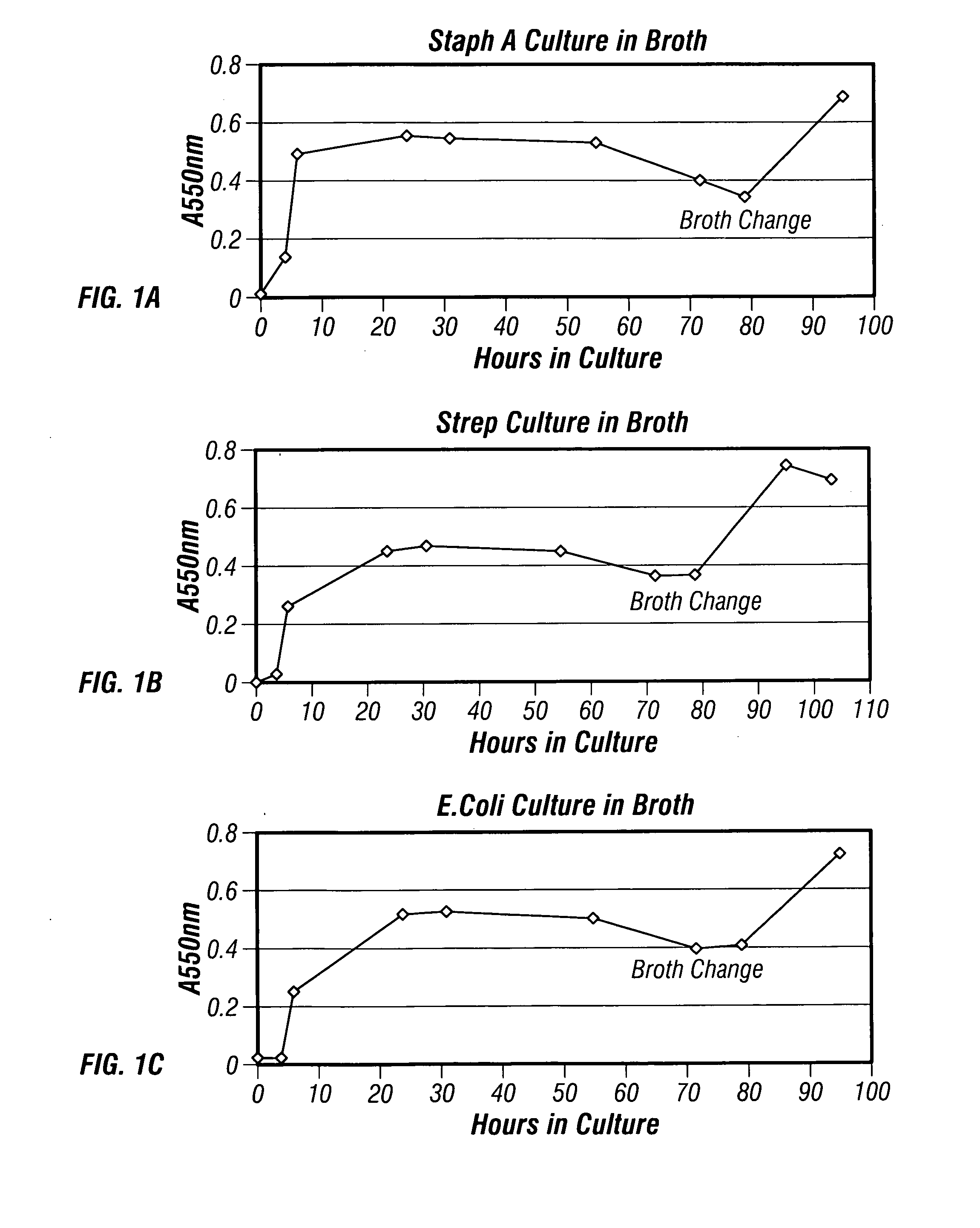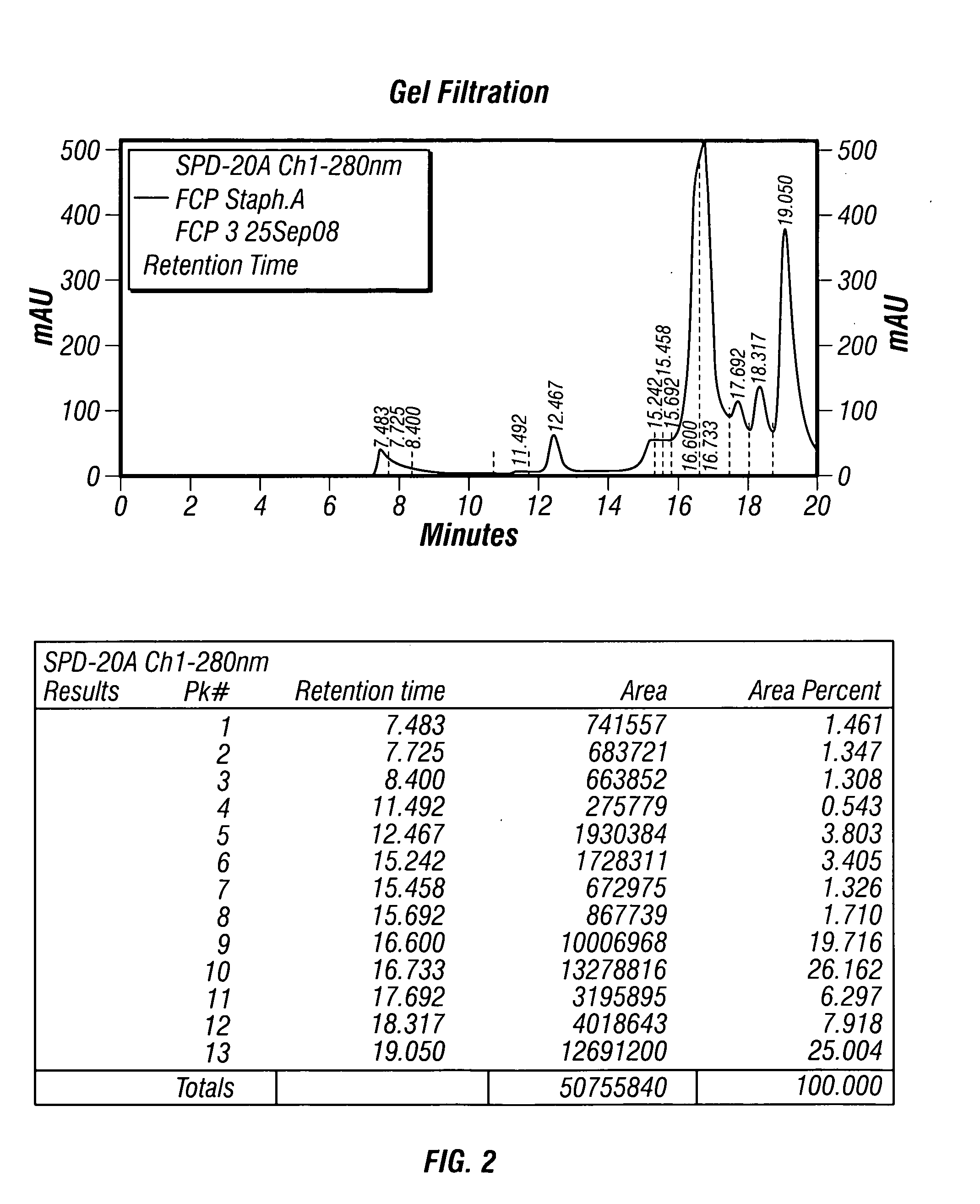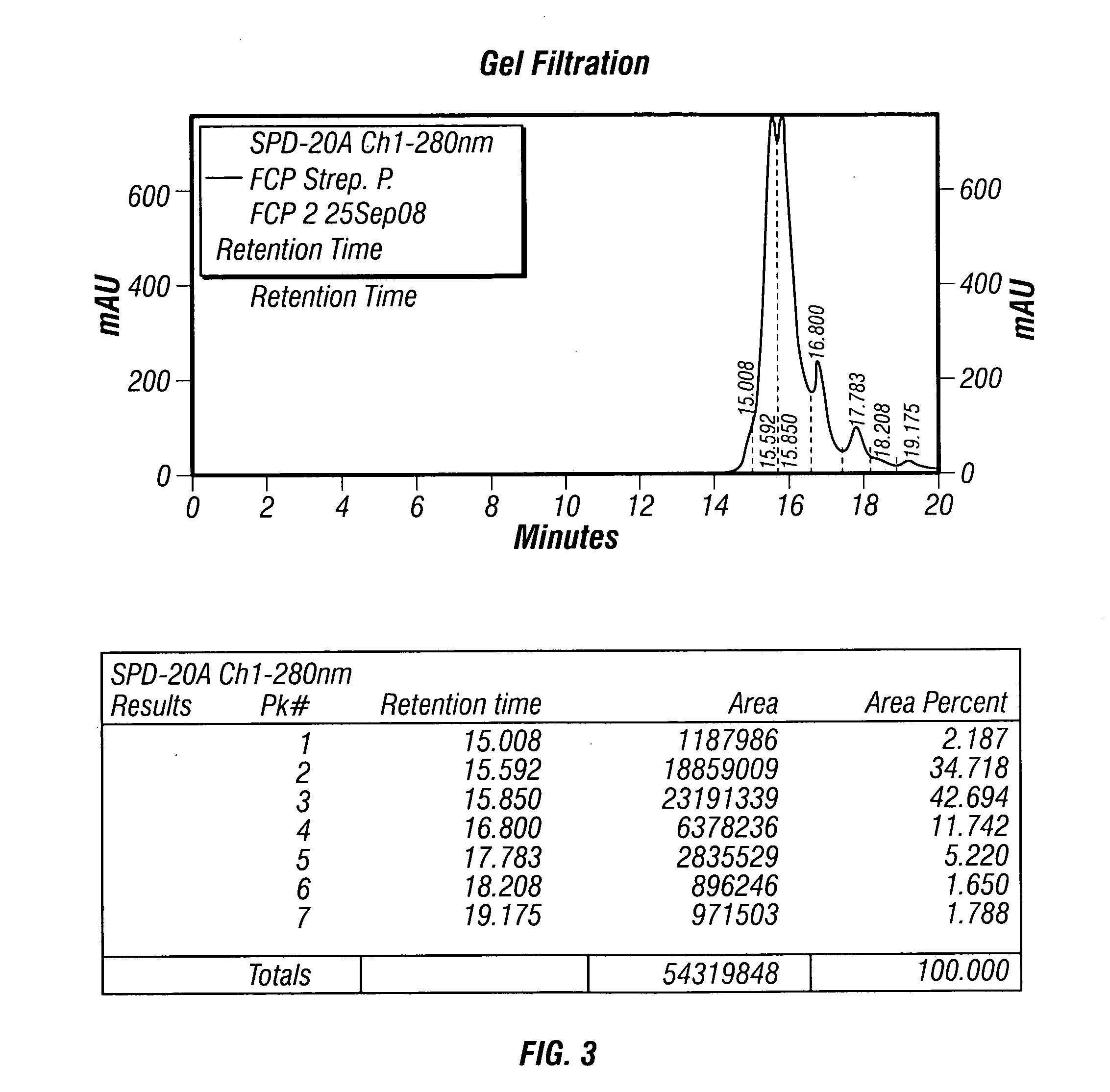Affinity purified human polyclonal antibodies and methods of making and using them
a technology of human polyclonal antibodies and affinity purification, which is applied in the field of bacteria infections, can solve the problems of severe diarrhea, multidrug-resistant baumannii /i>is a common problem, and remains a significant cause of illness and death in clinical and non-clinical settings
- Summary
- Abstract
- Description
- Claims
- Application Information
AI Technical Summary
Problems solved by technology
Method used
Image
Examples
example 1
Bacterial Culture and Antigenic Preparation
[0165]Staphylococcus aureus (ATCC #BAA-1556), Streptococcus pyogenes (ATCC #19615) and Escherichia coli 0157 (ATCC #43895) bacterial cells were cultured separately in Bacto™ Tryptic Soy Broth containing 17.0 g / L pancreatic digest of casein; 3.0 g / L enzymatic digest of soybean meal, 5.0 g / L NaCl, 2.5 g / L K2HPO4 and 2.5 g / L dextrose (VWR Cat. No. 90000-378; Becton Dickinson Cat. No. 211825; 30% w / v in de-ionized H2O) at 37° C. on a rotator, e.g., a 2 liter roller bottle that was half filled. Every 12 hours, a 2.5 mL sample was removed from each bacterial culture to determine bacterial counts (OD measurement and serial dilution on blood agar plates) and total protein concentrations (BCA and Lowry protein assays). Bacterial growth was plotted for each culture to determine when the cultures reached saturation. Saturation was typically observed after about 72 hours.
[0166]When the cultures reached saturation, the bacteria were washed (involving ce...
example 2
Affinity Purification of Human Polyclonal Antibodies
[0168]The combined antigenic preparation purified using a 0.2 μM filter is immobilized on sterilized CNBr-activated Sepharose 4B by direct immobilization of the combined antigenic preparation to the sterile, activated gel by overnight incubation at pH 9.0 at 2-8° C. in a rotator. A wash with phosphate buffer removes the uncoupled antigen and any remaining active sites are blocked by glycine. Any suitable substances can be used for the blocking step. In some embodiments, proteins, e.g., serum albumin can be used. Bovine serum albumin can be used. Preferably, human derived proteins, e.g., human serum albumin, are used for the blocking step.
[0169]A 25 L volume of lipid-stripped normal human immune plasma is applied to the affinity chromatography column. The immune plasma is charged over the antigen column The antibodies specific to the column bind to the immobilized antigens. The non-specific plasma components are washed off the colum...
example 3
Titer Determination of Affinity-Purified Human Polyclonal Antibodies
[0171]Human polyclonal antibodies against A. baumannii, P. aeruginosa and S. aureus whole cell extracts were prepared by affinity purification of lipid-stripped normal human immune plasma substantially as described above in Example 2. The concentration of the antibodies was adjusted to 2.0 mg / ml in 10% maltose and 0.03% Polysorbate 80, pH 5.5, and several serial dilutions were prepared in a 2% solution of bovine serum albumin (BSA) in phosphate buffered saline (PBS), pH 7.4, for a titer determination experiment (1:10, 1:100, 1:1,000 and 1:10,000).
[0172]Several 96-well microtiter plates were blocked with 2% BSA in PBS, pH 7.4, and subsequently coated with the A. baumannii, P. aeruginosa and S. aureus antigenic preparations that were used for affinity purification of the human polyclonal antibodies. Each dilution of the antibodies was added to the coated plates, incubated at room temperature for 4 hours and washed wit...
PUM
| Property | Measurement | Unit |
|---|---|---|
| concentration | aaaaa | aaaaa |
| temperature | aaaaa | aaaaa |
| pH | aaaaa | aaaaa |
Abstract
Description
Claims
Application Information
 Login to View More
Login to View More - R&D
- Intellectual Property
- Life Sciences
- Materials
- Tech Scout
- Unparalleled Data Quality
- Higher Quality Content
- 60% Fewer Hallucinations
Browse by: Latest US Patents, China's latest patents, Technical Efficacy Thesaurus, Application Domain, Technology Topic, Popular Technical Reports.
© 2025 PatSnap. All rights reserved.Legal|Privacy policy|Modern Slavery Act Transparency Statement|Sitemap|About US| Contact US: help@patsnap.com



